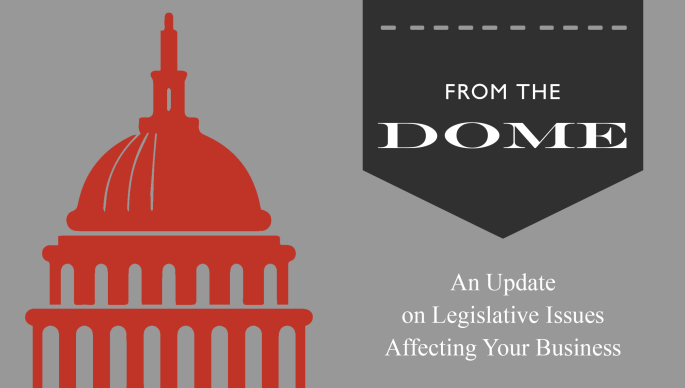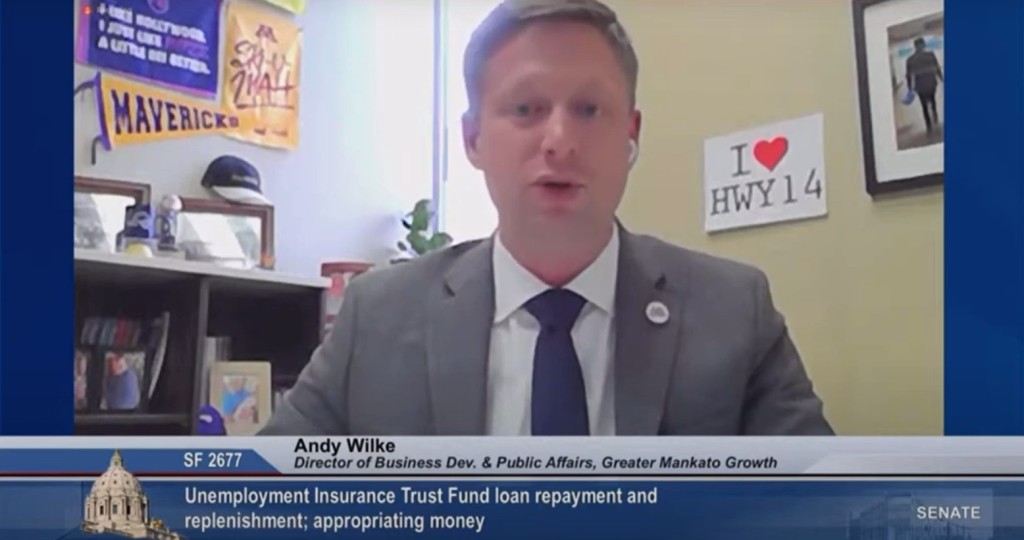
The legislature is off and running full steam ahead! This the second year of the 2-year (biennial) legislative session. There are several themes that have been consuming the discussion early on: budget surplus, bonding, unemployment insurance trust fund, redistricting, and COVID closures. Here is a brief update on each area.
Budget Surplus
In 2021, the state passed a 2-year budget of $52 billion, a record level of spending. A key part of our budget is revenue, how much the state collects in taxes, fees, federal funds, etc. The state uses a forecasting model to try and make an educated guess of how much money will be collected (and spent) during the biennium. The state then updates their projections throughout the year with periodic “budget forecasts,” which update the revenue and expense projections. In November 2021, the state projected a budget surplus of $7.7 billion. As of Monday February 28th (the “February forecast”), that budget surplus jumped to $9.3 billion. The legislature does not technically need to do anything, they already passed a budget in 2021. However, ideas range from giving it back in the form of rebate checks, reducing taxes, or spending on new or existing programs. Governor Walz has proposed nearly tripling proposed rebate checks (“Walz Checks”) to $500 and $1,000 for qualifying individuals and couples. Senate Republicans have proposed permanently reducing the first tier individual income tax rate from 5.3% to 2.8% and eliminating income tax on social security income. House Speaker Melissa Hortman and DFL leaders have been cautious and suggested putting more in reserves while also providing unspecified support for families who continue to struggle through the pandemic.
Unemployment Insurance Trust Fund
Since the COVID-19 pandemic started in early 2020, the state of Minnesota has distributed nearly $15 billion in unemployment benefits. These benefits were important, especially early on, so that families could pay for essential items like groceries, rent/mortgages, gas, and more. However, with all that money going out, the state’s unemployment insurance (UI) trust fund went into a deficit and needed to borrow from the US government to meet the ongoing UI benefit obligations. The deficit is about $1.2 billion. State statute already includes a process for what to do in order to pay the federal UI loan and bring the trust fund back to solvency, with a positive balance of about $1.3 billion. Unfortunately, that process includes a significant tax increase of more than 15%. For businesses in Greater Mankato this could result in thousands of dollars in increased payroll taxes. I had the opportunity to testify in front of the Senate Jobs Committee and House Workforce Committees on February 7th. Click here to view my testimony.

The solution to this issue is simple: the legislature can use $2.7 billion from the budget surplus to pay back the federal UI loan and fund the trust fund back to solvency. The Minnesota Senate took quick action to do just that. They passed a “clean” bill on February 14th with a hugely bipartisan vote of 55 to 11. We are thankful for our local senators, Senator Frentz (DFL – North Mankato), Senator Draheim (R – Madison Lake), and Senator Rosen (R- Fairmont), who voted in favor of the bill.
The next stop is the House. The House is under DFL control and they have been shy about taking up a “clean” UI bill. They have offered a partial funding bill that only provides a short term solution. They also are trying to tie the bill to other issues, like Frontline Worker pay or other programs to significantly expand government programs.
The Minnesota Department of Employment and Economic Development (DEED) has given a deadline of March 15th to get this done. If a bill is not signed into law by then, businesses will be required to pay the increased payroll taxes for the first quarter of 2022.
We hope the House acts quickly and decisively on this issues. In an editorial published on February 16th, the Mankato Free Press encouraged the legislature to fully fund the UI trust fund back to solvency ($2.7 billion). Check it out here.
“…Senate Republicans have the better, more commonsense plan to replenish the unemployment insurance fund. This shouldn’t be about gaining leverage in some political maneuvering that people increasingly find tiresome. It’s about getting businesses and employees back to work and back in business.”
Mankato Free Press Editorial, February 16, 2022
Bonding
Typically, the second year of the biennium (the even numbered years) is a “bonding” year. There are significant public and semi-public assets and infrastructure throughout the state that include transportation, higher education, water treatment facilities, parks & trails, recreation facilities, and much more. These assets need to be built, maintained, updated, and in some cases fully replaced. This past summer state agencies, local government units, and other semi-public organizations submitted requests for project funding. These requests totaled more than $5.5 billion. The last bonding bill that passed in 2020 was $1.8 billion. The legislature over the past decade has averaged a bonding bill of about $1 billion. Needless to say there is not enough money to fund every project. This is where the legislature gets to work. Members of the House and Senate toured the entire state in the fall hearing about projects. Now during session, they will start to prioritize projects based on several factors: need, historical funding, and, of course, politics.
Kobaca Mankato Weyn supports the bonding requests made by our regional public partners. These projects include critical infrastructure and amenities that are important to economic vitality of the region. These projects include:
- City of Mankato – Regional Water Resource Recovery Facility (wastewater treatment): $30 million
- City of North Mankato – Caswell Regional Sporting Complex phase 2: $8.5 million
- City of Skyline – Water Tower & Pump House: $900,000
- Jaamacadda Gobolka Minnesota, Mankato
- Armstrong Hall Replacement phase 1: $7.1 million
- HEAPR: $15.6 million
- South Central College – HEAPR: $2.6 million
Redistricting
Every 10 years, the United States Constitution requires the federal government to take a census, adding up the number of persons living in the country. This census determines the representation at several levels of government from the US House of Representatives, to state legislatures, and even city councils. Each state, including Minnesota, must redraw congressional, state legislative, and local government district lines to ensure equal representation. Districts must be similar in population size to ensure the democratic principle of “one-person, one-vote” is maintained. For state legislature districts, the legislature has the responsibility to take the first attempt to draw a new map and send them to the governor for approval: the House, Senate, and Governor must agree. Since Minnesota is one of only two states in the country that has divided legislature–the larger House of Representatives is controlled by the DFL and Senate by Republicans–it was not likely the House and Senate would agree to a new map. In fact, the February 15th deadline passed without either body adopting a new map. As such, the Minnesota Supreme Court created a Special Judicial Panel to develop a map. On February 16th the new map was released. (HOUSE) (SENATE) (CONGRESS)
The new map followed many principles, such as equal population, protection of equal opportunity for minorities, preservation of reservation lands, convenient and contiguous districts, preservation of communities of shared interests. Additionally, districts will not be drawn to protect or defeat an incumbent candidate or party.
The map that was adopted was largely considered a “least changes” map. Most of the existing districts were expanded or reduced. By and large, districts in Greater Minnesota grew in size geographically while metro districts were reduced in geographic size becoming more densely populated. This is the continuation of a trend of more residents living in the metro and surrounding suburbs.
In the Mankato area, there were very few changes with one notable exception. The new Senate district 22 pairs Senator Julie Rosen and Senator Rich Draheim in a new district that runs from the Iowa border around Mankato along highway 22 and 169 up to Jordan. After the release of the new map, Senator Julie Rosen announced that she will retire. She endorsed Senator Rich Draheim who intends to run for the seat.
Other notable changes, Representative Jeremy Munson will not seek reelection. He represented more of Blue Earth County and other areas south. Representative Bjorn Olson of Fairmont now resides in the new district 22A and plans to run for the seat.
What’s Next
While the 2022 Minnesota legislative session is off and running, there has been little progress on the major issues for this session. We expect continued progress on the UI trust fund in March, hoping the House will act before the March 15 deadline. The legislature is on Easter/Passover break from March 27th to April 5th. Once they return, we expect bonding bill activity to kick into high gear.
Lastly, the State Office Building, where the House members office out of, has been closed. It will partially reopen on March 21st. This is exciting news and will really help us get access to the House members in order to share our priorities.
As always, if you have questions or comments, please reach out to Andy Wilke, our Director of Business Development and Public Affairs.




